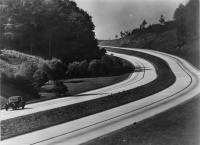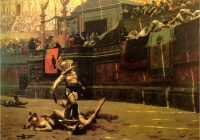Public space
From The Art and Popular Culture Encyclopedia
|
Related e |
|
Featured: |
A public space is a social space that is generally open and accessible to people. Roads (including the pavement), public squares, parks and beaches are typically considered public space. Government buildings which are open to the public, such as public libraries are public space. Although not considered public space, privately owned buildings or property visible from sidewalks and public thoroughfares may affect the public visual landscape, for example, by outdoor advertising. Recently, the concept of Shared space has been advanced to enhance the experience of pedestrians in public space jointly used by automobiles and other vehicles.
Public space has also become something of a touchstone for critical theory in relation to philosophy, (urban) geography, visual art, cultural studies, social studies and urban design. The term 'public space' is also often misconstrued to mean other things such as 'gathering place', which is an element of the larger concept of social space.
One of the earliest examples of public spaces are commons. For example, no fees or paid tickets are required for entry. Non-government-owned malls are examples of 'private space' with the appearance of being 'public space'.
See also
- Busking
- Enclosure
- Footpath
- Freedom of panorama
- Guerrilla gardening
- Public art
- Public display of affection
- Public indecency
- Public land
- Public nudity
- Speakers' Corner
- Street photography
- Third place (community)
- Urban design
- Village green



_-_Seurat.jpg)

